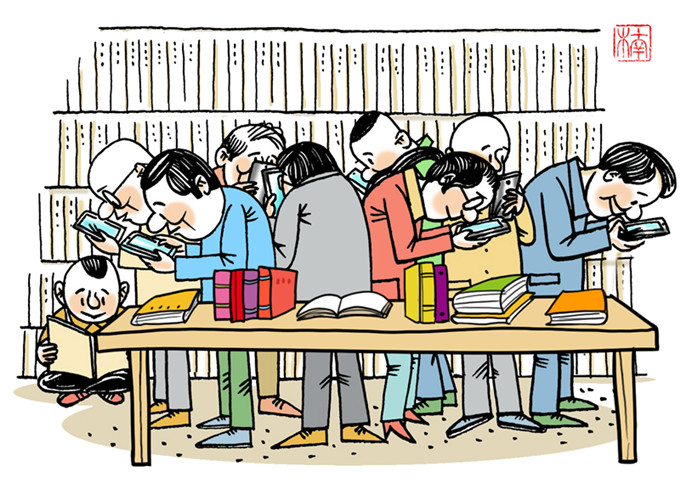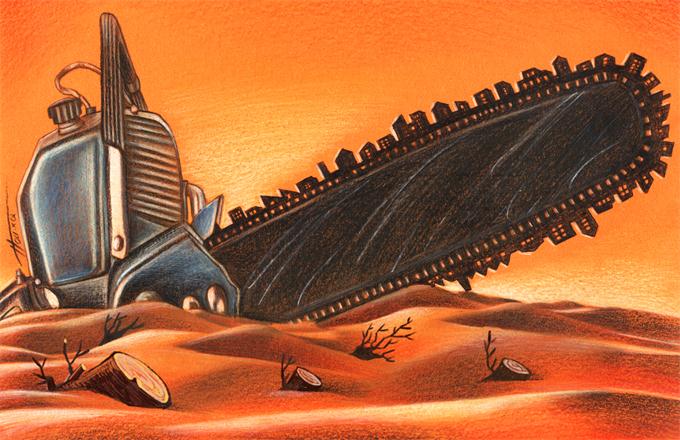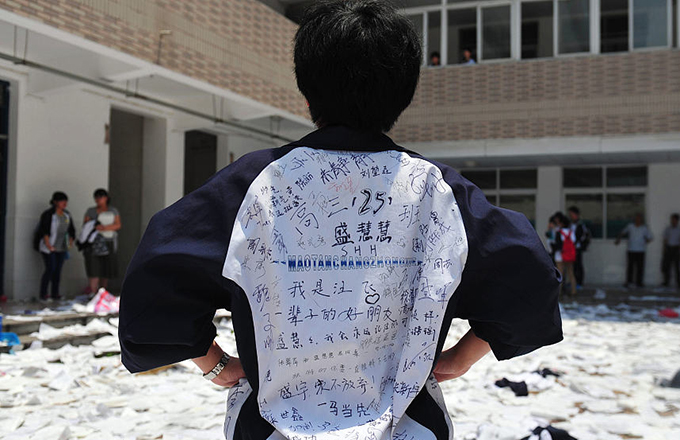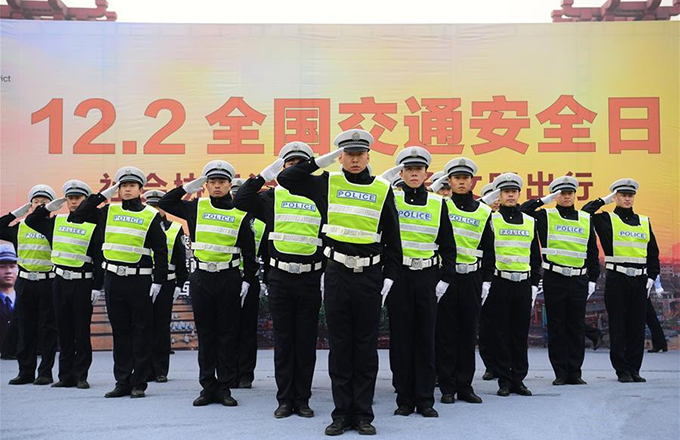China's One Belt One Road Initiative and the Gulf Pearl chain
Ever since the policy of “One Belt One Road Initiative” was propounded by President Xi Jinping, the Gulf Region Countries (Saudi Arabia, UAE, Qatar, Kuwait, Bahrain, Oman, Iraq and Iran)whole heartedly appreciated and pledge their co-operation to it. The relationship between China and Gulf Countries dates back to thousands of years of peaceful existence and cooperation. The Gulf region is in Unique geo-political position, as it connects three continents Asia, Africa and Europe this geographical position gives it a vital strategic Significance in One Belt One Road Initiative.
Currently, China is highly dependent upon oil and gas imports, principally from the Persian Gulf and Africa, which are carried mainly by tankers over sea lines of communication (SLOCs) and runs through maritime choke points. According to Energy Information Administration (EIA), the statistical arm of the U.S. Department of Energy, China’s oil imports in 2015 amounted to about 6.6 million barrels per day (b/d), representing 59 percent of the country’s total oil consumption and gas imports amounted to 1.4 trillion cubic feet (Tcf) in 2015 (about 24 percent of consumption) this consumptions are expected to double in next 20 years for its sustainable development. An energy imports cut-off enforced during hostile conditions may trigger a rapid collapse of China’s economy and paralyze its military forces, hence One Belt One Road and Specially the Gulf Pearl Chain which includes all the six GCC countries as well as Iraq and Iran would be a major breakthrough to reduce its dependence on SLOCs on one side and increase Economic and regional integration as it would connect West Asia with Southeast and East Asia which would be a win-win situation to all the partners.
At a time whenUSA is moving out of this region and the US President pledged to build walls and other roadblocks to international immigrants and in particular Muslims, has forced these countries to look east, where as China’s vital energy interests in the region have given it reasons to take a larger interest in regional security. Hence, today China is making inroads providing suitable alternative in all spheres Energy, Political, Infrastructure, Defence etc.
This paper emphasizes on significance of Middle East in China’s One Belt One Road Initiative as well as increasing mutual interdependency between the China and Gulf Countries in various sectors such as Energy, Construction and Infrastructure building, Political ties, Human resources, Agriculture, Defence ties and Regional security measurements. As stable Gulf region is vital for China’s Sustainable growth. And how with the Completion of the Gulf Pearl Chain, China can achieve effective management and control the flow of its energy needs and will open a new markets and trade routes for the Gulf Countries as the One Belt One Road Initiative would connect Gulf economies with the Southeast and East Asian economies which will enhance economic integration and co-operation.
Insight of China’s One Belt One Road Initiative (OBOR)
The moment OBOR was propounded by Chinese President Xi Jinping on September 7, 2013 in a Speech Delivered at Kazakhstan’s Nazarbayev University, apprehended attention of the world and Asian countries in particular, on October 3, 2013, while addressing the Indonesian parliament he suggested that China and Southeast Asian countries should work together to revive the Maritime Silk Road, but the official birth of OBOR took place at a work forum on Periphery Diplomacy held by the Chinese Communist Party held on October 25-25, 2013 in Beijing, President Xi said that China is committed to forging amicable and mutually beneficial relations with its neighbourhood.
The scope of OBOR, is quite large, covering more than 60 countries thus, this great ambition will require significant resources like technological, human, financial and political that will need to be garnered globally to realise the vision as the Belt and the Road will run through Asia Africa and Europe it will directly link the East Asian economies to the West Asian and further to the European economies. The One Belt One Road initiative talks about two different routes A land route called as The Silk Road Economic Belt—a series of land-based infrastructure projects including roads, railways, and pipelines—focuses on strengthening links between China, Central Asia, Russia, and Europe, and a sea route, known as the “Maritime Silk Road” or simply the “Road,” made up of ports and coastal development, begins from China’s eastern ports and goes on to Southeast Asia, South Asia, East Africa and then on to West Asia and the Mediterranean, embracing Greece and Venice and ending at Rotterdam. Both routes, again recalling the old Silk Road, will have a series of loops and branches, with the two main routes also meeting at important junctions, such as Gwadar, Istanbul, Rotterdam and Hamburg.
The Action plan on the Belt and Road Initiative issued by the National Development and reform Commission, People’s Republic of China (PRC),(March 2015) stated that“the initiative to jointly build the Belt and Road, by embracing the trend toward a multipolar world, economic globalization, cultural diversity and greater IT application, is designed to uphold the global free trade regime and the open world economy in the spirit of open regional cooperation. It is aimed at promoting orderly and free flow of economic factors, highly efficient allocation of resources and deep integration of markets; encouraging the countries along the Belt and Road to achieve economic policy coordination and carry out broader and more in-depth regional cooperation of higher standards; and jointly creating an open, inclusive and balanced regional economic cooperation architecture that benefits all. Jointly building the Belt and Road is in the interests of the world community. Reflecting the common ideals and pursuit of human societies, it is a positive endeavour to seek new models of international cooperation and global governance, and will inject new positive energy into world peace and development.”
The plan fits with China’s economic, security, military, and diplomatic strategy as well as long term strategic requirements
Long Term Goals
In the 21st Century China has emerged as the world’s top trading nation hence it needs to ensure that it has timely, efficient, and secure access to markets and resources, and therefore facilitation of trade and investment is one key focus. In addition, it should not be surprising that securing conventional and renewal energy and resources is another focus for China. Once completed, “OBOR” will provide land-based and sea-based alternatives not just for China accessing to the continents, but also access for other countries to China. Transport link is a critical consideration for China, as it is vulnerable to choke points along its sea route. Such threats would be mitigated once land based alternatives including railroads, highways, and communication links are in place.
Short Term Goals
More immediately, “OBOR” will provide new markets and business opportunities for the China which will help it to deal with its excess industrial capacity especially for its debt-laden state-owned companies. In addition, after three decades of breakneck economic development, Chinese companies are now more capable of competing for businesses with its overseas competitors, given the rise in technological sophistication and maturity. One should also take population and 29% of global GDP. Trade between these countries and China reached more than US$1tn in 2014, or 26% of China's total trade value. (China Focus I, 2015)
Significance of Middle East to China and its One Belt One Road Initiative
The middle east region is in distinctive geographical position connecting 3 continents of Asia, Africa, and Europe. The relationship between China and the Middle East is deeply impacted by the international system and regional patterns, as well as the adjustments of China’s own developmental and diplomatic strategies. In the 1950s and 60s China relation with Middle East was characterised by the confrontation between the US and the U.S.S.R. As China, itself was a new State formed by a revolution it supported national revolutionary movements against the monarchies who had formed alliance with the West. Hence one can understand why China established diplomatic relationship with post-revolution Iraq in 1958, and supported the leftist revolution against Sultan of Oman.In the 1970s the relationship between China and USA started to ease but the relationship between China and U.S.S.R hit an all-time low as there were serious confrontations between them hence China started confronting U.S.S.R. in this region as a result it established relations with monarchies, like Iran, Kuwait etc.
The decade of 1980 was the decade where China started its one independent policy towards this Middle Eastern Countries, it was a decade which witnessed lot of drastic changes in international politics establishment of Iran Islamic Revolution in 1979 which led to the outbreak of Iran-Iraq war, U.S.S.R. waged a war on Afghanistan, US fostered the Carter doctrine as a response to U. S. S. R.s action in Afghanistan. China adopted neutral policy Iran-Iraq war and continued developing its relations with the Monarchies by end of this decade China had established diplomatic relations with all the GCC countries and the last among them was Saudi Arabia.
After the collapse of U.S.S.R. in 1990 US remained the only dominant power in the worldand started spreading its hegemony in the world in general and Middle East in particular through the gulf war, China’s policy during this period was carried by National Interest to be reserved on important topics like gulf war or Iraq disarmament crisis, improved relations with western countries and improved economic relation with the middle east countries as rapid industrialisation and modernisation took place in China and it started transforming into global trading partner.
In the first decade of 21stCentury China became major driver of global trade firmly established itself as manufacturing hub of the world and in the same period it also over took USA as most preferred export partner. Last year US, Trust, Bank of America Private Wealth Management chief market strategist Joseph P. Quinlan Backpublished a report in which he shared a chart showing how in 2000, just five countries considered China as their top export market, while a whopping 53 said the same about the US. But till 2014, the positions changed "today, it's China more so than the US." 43 countries count China as their main export partner now, compared with just 31 saying the same about US.Hence today China’s economy is very much integrated into the world and adeep economic downturn in China will be felt globally, and especially among the world's top commodity producers.
Hence today China and Middle East need to co-operate with each other more than any period in the history of mankind, large scale of energy imports, diversified economic relations, the solidification of the power ambitions, and current diplomatic conversion have made China to gradually increase its participation in the economic governance of Middle East. This participation is not limited to energy but also in other fields such as construction and infrastructure building, finance, defence sector agricultural sector etc.
Gulf Pearl Chain a Pilot Project of China’s OBOR
Gulf countries can be referred as core of Middle Eastern region as this are the most influential countries in the Middle East, which consists of 6 GCC countries plus Iraq and Iran. UAE, Saudi Arabia, Qatar, Kuwait, Bahrain, Oman, signify a kind of black pearls scattered along the Arabian Sea and the Persian Gulf (as historically this region was famous for abundance in black pearls) these countries are very much interested in OBOR, they currently have good economic development and political stability, at the same time enjoy a level of financial strength as people here are comparatively wealthy then other Middle Eastern countries. Although the economic scales of these countries are relatively small, as are their populations once the co-operation is successful, it can not only play a demonstration role for the entire Middle East, but also can also prove as a pioneering example for the OBOR initiative, as according to me though China-Pakistan Economic Corridor is considered as flagship of OBOR but we look at it carefullyit’s only a bilateral agreement between two all-weather friends hence the real multilateral success will come after creation of the Gulf-Pearl Chain which will connect this countries by a network of roads and railways as well as oil pipe line to the western part of China through CPEC. It will test China’s diplomatic ability to bring mutual consultationamong these countries, while balancing its relation between arch rivals Iran and Saudi Arabia.
The purpose of the Gulf Pearl Chain in the construction of OBOR includes first to achieve pluralistic, autonomous, balanced and sustainable development of countries along the OBOR, to create a community of political mutual trust, economic integration, cultural tolerance, which shares common interest, destiny and responsibility; the second isto promote orderly free flow of economic factors and efficientallocation of resources, and depth fusion of markets, driving thecountries along the Silk Road to achieve the coordination of economic policies, to carry out regional cooperation in a widerrange, higher level and at a deeper level, and together to build anopen, inclusive, balanced, and beneficial regional economic cooperation framework. (Xuwen, Q., 2016).
The gulf countries are all Arab countries except Iran and China has good relations with them as it considers them as natural partners in OBOR,which is in line with the purposes and principles of the UN Charter. It upholds the Five Principles of Peaceful Coexistence: mutual respect for sovereignty and territorial integrity, mutual nonaggression, mutual non-interference in internal affairs, equality and mutual benefit, and peaceful coexistence. The Initiative is intended to be inclusive and to follow market principles.
The “One Belt, One Road” strategy emphasizes international cooperation according to the following five priorities:
1. Policy coordination
2. Facilities connectivity
3. Unimpeded trade
4. Financial integration (linking economies through institutions such as the Asian Infrastructure Investment Bank, the BRICS New Development Bank, and the Silk Road Fund)
5. People-to-people bonds (providing public support for implementation)
China’s emergence as an important state providing economic governance in Middle East in general and the Gulf Region in particular
China’s participation in Middle East Economic governance and specially in the gulf region has its own characteristics in governance goals, which is different from its western counterparts and for this it also faces criticism from the west and specially from the US as free rider in this region.
China’s answers Western criticism through its bilateral and multilateral co-operative actions and multilateral governance. The focus of Western powers reform in terms of the governance objective is to promote democracy and security which tends to be short-lived and with little success, China places great importance on livelihood and development of the people, it says that if these countries are helped in enhancing their independent developmental capacities it will prove as a permeant solution. The political security dilemma has often resulted from economic problems, unemployment, poverty and other livelihood issues are main causes of the upheavals in the Middle East. If these problems are adhered stability and development can be achieved in this region which will pave way for OBOR.
China’s strategic coordination with the Arab world is an important part of its “One Belt, One Road” vision, and China has proposed a comprehensive cooperation strategy known as 1+2+3 (Yang, 2014). “One” refers to the need for increased cooperation on energy, covering a range of issues that include oil and natural gas production, ensuring the safety of energy transport routes, and establishing a mutually beneficial, long-term China-Arab energy relationship. “Two” stands for the two wings of infrastructure development, construction and trade/investment facilitation. “Three” relates to breakthroughs that need to be made in the high-tech areas of nuclear energy, aerospace satellites, and new energy in order to upgrade practical cooperation between China and the Arab world. (Xinhua net June 2014).
Energy sector:
China is the world’s largest import of energy resources specially oil and gas in 2015 its crude oil imports were close to 336 million tons, the oil imports from middle east amounted over 170 million tons accounting for 50.7%, its to top ten oil sources includes six Gulf countries Saudi Arabia, Iran, Iraq, Kuwait, UAE, Oman. Thus,China, has become an important market for gulf countries which are highly dependent on oil and gas exports. In return China brings certain investment funds and technological assistance which enhances the capacity of sustainable development of energy industry.
Construction and Infrastructure Building:
China’s involvement in construction in the gulf region date backs to 1990 e.g. Tehran’s Metro Line no 1 and 2 1995. Today the gulf countries are focusing on promoting industrialization with the priority of the expansion of infrastructure and equipment manufacturing in high-tech industry at present the engineering contracting market accounts 19% of the world, this brings great opportunity for Chinese enterprises at present they are collaborating in the field of high-speed rail, electricity, and port construction.e.g. in 2014 CNPC obtained 40% shares of the land and maritime cooperation zone of the Abu Dhabi national oil company, in December 2015 Harbin Electrical Group and the Saudi International Electricity and Water Group signed agreement to jointly develop the electrical power market in Europe, Asia, and Africa.Further China is also helping Iraq in post war construction and development processes.
Outer Space Technology:
China has advanced aerospace technology, complete scientific research system as well as a complete set of industrial facilities. Hence China can effectively help the region to develop outer space technology. At present, China and the Arab countries have reached a consensus in projects, such as the China-Arab technology transfer centre, and the Training Centre for peaceful use of nuclear energy in Arab, clean energy training centre in Arab, and the BeiDou Navigation Satellite System (BDS) has landing in the Arab world, showing the sincere wish and a huge potential of the cooperation between the two sides.
Trade and Investment:
China has signed trade co-operation agreements with Middle Eastern Countries, to build mutually beneficial trade platforms, and has promoted the construction of mechanisms, such as China-Arab Economic Trade Forum and the China-GCC free trade area the negotiations of which are in last stages. The increase of bilateral trade has mutually benefited boththe sides as it gave energy security to China and provided manufacturing goods to the gulf countries who are heavily dependent on it. China’s participation in the Middle East investment and financial management includes mechanism building, expanding governance co-operation in petrodollars, sovereignty wealth fund, Islamic finance, oil finance etc. China and Middle eastern countries have established multilateral and bilateral development funds and have set up offshore RMB trading centres, through currency swaps agreements trade and investment facilitation with its currency circulation, which has made a positive impact on the financial governance structure of the Middle East.
e.g. In November 2014, China and Qatar signed a bilateral swapagreement of 35 billion RMB/20.8 billion Rials. For theconvenience of Chinese enterprises to carry out business activities in the Middle East, the industrial and Commercial Bank of Chinaopened branches in Dubai, Abu Dhabi, Doha, Kuwait, Riyadh andIstanbul.
Six out of eight gulf countries are among the 57 founding members of the Asian Infrastructure Investment Bank initiated by China.
Political Ties:
As discussed earlier China and Gulf countries relations were influenced by the Cold war power dynamics the GCC states where suspicious of China Iran relations. China and Iran first established diplomatic ties in 1971, UAE in 1984, Qatar in 1988, Bahrain in 1989 and Saudi Arabia in 1990. At first the GCC countries doubted China’s intentions as China-Iran relations grew in various fields, including arms technology and energy China helped Iran in building bridges, dams, railroads etc. But due to drastic changes in Global Order and emergence of China as the largest trading nation in the last 30 years made GCC countries to move closer to China. Since then there have been high level state and military visits from both the sides. From the2000s early the GCC has enacted plans at times jointly or at times individually to reach out to China in a robust manner to balance to China Iran relations precisely through economic engagement. E.g. King Abdullah of Saudi Arabia gave his first official visit to China after assuming the throne in 2006. Bahraini King Hamad bin Isa al-Khalifa’s visited China in September 2014 while serving as GCC president to build new opportunities through sustainable development.Chinese President Xi Jinping has placed a lot of importance on Gulf region in January 2016 he visited Saudi Arabia, Egypt, and Iran which marked the first full frontal launch of China’s One Belt, One Road (OBOR) strategy in the Middle East. The visit has wide implications for Gulf Cooperation Council (GCC)-China relations.
Agricultural Cooperation:
These countries depend on foreign exports for agricultural products hence it provides a market for Chinese agricultural products, beyond this China seeks to co-operatein arid zone agriculture, water-saving irrigation, Muslim food, food security, animal husbandry and veterinary medicine. By encouraging agricultural science and technology personnel from the two sides to increase exchanges. In China’s Arab policy paper, it claims that it will continue to set up demonstration projects of agricultural technology in Arab countries, scale up agricultural management and technology training, and strengthen project follow-up and evaluation.
Defence ties and Regional security:
The military and defence relations between China and Iran dates to 1980’s but co-operation saw downfall due to nuclear sanctions.In January 2016 on President Xi Jinping visit to Iran, the two countries signed a twenty-five-year strategic cooperation agreement that included a call for much closer defence and intelligence ties. In November 2016, Chinese defence minister Chang Wanquan concluded a three-day trip to Iran, the latest in a series of high-ranking bilateral military exchanges over the past two years.Interestingly, inter-defence affairs rose slowly over the yearswith GCC countries and most with Saudi Arabia Iran’s arch rival. By far the biggest indicator is the Chinese sale of CSS-2 ballistic missiles to Saudi Arabia in 1988. An additional sale of a more accurate solid fuel intermediate range missiles occurred in 2007.China’s naval participation through the People’s Liberation Army Navy (PLAN) deployment of several vessels in counter-piracy operations off the coast of Somalia resonated with the GCC by showing that Beijing is a reliable security partner in keeping maritime sea leans open. Notably, a Chinese colonel attended regular meetings of Shared Awareness and Deconfliction (SHADE) mechanism in Bahrain as part of the information sharing nexus against maritime piracy in the Gulf of Aden and beyond.Currently, both the Saudis and the Emiratis are using Chinese UAVs in their military action in Yemen—against Iranian-supported Houthi rebels. (Karasik, T., Feb 2016). Further China calls for a concept of common, comprehensive, cooperative and sustainable security in the Middle East, and supports Arab and regional countries in their efforts to build an inclusive and shared regional collective cooperation security mechanism, so as to realize long-term peace, prosperity and development in the Middle East.
From the above explanation, it becomes clear that at a period when west used pressure and reforms from the outside as a path for governance in this region, China gave emphasis on mutually beneficial cooperation based on the gradual and localized governance. The west preferred radical governance for e.g. United States “Greater Middle East Democracy” to create democratic countries in the region eventually failed, China has preferred “progressive” governance and till now has achieved a great success in this region.
Challenges for OBOR and Gulf Pearl Chain
Middle East is a region where the most global hot issues are concentrated. Since the Arab Spring in the Middle East, ethnic, religious and sectarian conflicts the region has remained in constant turmoil.
The extremist terrorist forces are very much active in this region, in the last two years, the ISIS terrorist forces have grown fast in Syria and Iraq they have occupied cities in this states, the area controlled by ISIS groups has become a place for the aggregation and diffusion of global extremist and terrorist forces. Today ISIS is not only active in Middle East but has also penetrated Europe, Africa and other places. OBOR also faces threats from terrorist organisations which are active on borders of Pakistan and Afghanistan.
Investment in planned and ongoing Belt and Road projects could total roughly 240bn US$ in the coming years. However, the total investment needs in Asia are much larger than that. It is estimated, that only South Asia and South-East Asia will need at least 3,6 trillion US$ over the period 2010 –2020 in domestic infrastructure investment if they are to meet the needs of their growing population and of the trend towards urbanisation (Bhattacharyya et al, 2012). If we take into consideration the entire region of OBOR total estimated cost is going to increase day by day hence it will be responsibility of all the partners to finance this project as per their capabilities with a combination of public and private, domestic and international financing sources, customized to the specific circumstances of countries and projects.
Non-clarity on investment and fund accumulation how the fund will be allocated and it will be distributed some of these questions are still to be answered.
The OBOR lacks central coordination, as many routes and local construction are to be carried on by local or regional governments which may create delays and hurdles if State’s won’t cooperate with each other. Furthermore, Changes in political climate in individual countries would create roadblocks to China’s strategy. Another obstacle in OBOR is low oil prices, which are currently creating repayment challenges for some oil investments.Currently, China tends to rely on bilateral relations with each country to help secure its investments, but transnational infrastructure investment in OBOR might suggest a transition to more of a regional and multilateral engagement strategy. However, instead of joining an existing international framework, such as the Energy Charter Treaty, which could potentially provide legal recourse against investment dispute, China would prefer establishing a Chinese-led or Asian-led institute, such as the Asian Infrastructure Investment Bank. (Kaho, May 2016)
Conclusion
China's "One Belt One Road" policy focuses on connectivity in many dimensions. It includes trade, infrastructure and telecommunications connectivity technology transfer etc. China hopes to sign 60 free trade agreements with countries along the new Silk Road. But the policy goes much broader in also talking about people to people connectivity, cultural exchange and learning from each other's development experience. It also talks about peaceful development as a way of assuaging any fears that China is emerging as a global hegemon or that wants to oppose others. Within the broad “One Belt, One Road” strategy, Chinese Middle East energy policy proceeds according to the energy cooperation framework known as "1+2+3," which seeks to build a reliable China-Arab strategic cooperative relationship based on long-term friendship.
With the invest $45.6 billion China has launch of China Pakistan Economic Corridor as a flagship project of OBOR and if succeeded would be a big relief for China as it could able its landlocked western region to the Arabian sea. But the real first Multilateral Pilot Project of the OBOR would be Persian Gulf Chain which has specimens of all the obstacles that China will face in the broader concept of OBOR initiative and if succeeded it will not only benefit the two sides but will also open a new markets and trade routes for the Gulf Countries as the One Belt One road Initiative would connect Gulf economies with the Southeast and East Asian economies and with economic integration can become a pioneering modelof Greater South -South co-operation.
Citations
1. Vision and Actions on Jointly Building Silk Road Economic Belt and 21st-Century Maritime Silk Road, Issued by the National Development and Reform Commission, Ministry of Foreign Affairs, and Ministry of Commerce of the People's Republic of China, with State Council authorization (March 2015), retrieved on 20 January 2017 from http://vancouver.china-consulate.org/eng/topic/obor/.
2. A Brief on The “Silk Road Economic Belt and 21st Century Maritime Silk Road", China Focus I, UOB Global Economics & Markets Research, Quarterly Global Outlook 3Q2015 retrieved on 20 January 2017 from http://www.uobgroup.com/assets/pdfs/research/CN-Focus_I_3q15.pdf.
3. Bhattacharyay, B.N., M. Kawai and R. Nag (2012): Infrastructure for Asian Connectivity, Edward Elgar.
4. Yang Chengxi, “China Lays out '1+2+3' Strategy at CASCF Ministerial Meeting,” China Central Television, June 6, 2014, retrieved on 22 January 2017 from http://english.cntv.cn/2014/06/06/VIDE1402009324468536.shtml .
5. “Chinese President Stresses Top-Level Planning in Cooperation with Arab States,” Xinhua, June 5, 2014, http://news.xinhuanet.com/english/china/2014-06/05/c_133385932.htm.
6. QIAN Xuewen, “The New Silk Road in West Asia under “the Belt and Road” Initiative” Journal of Middle Eastern and Islamic Studies (in Asia) Vol. 10, No. 1, 2016, retrieved on 5 January 2017 from file:///F:/India/New%20folder/gulf%20pearl%20chain.pdf .
7. Theodore Karasik, “The GCC’s New Affair with China”, Middle East Institute, Policy Focus Series February 2016, retrieved on 25 January 2017 from http://www.mei.edu/sites/default/files/publications/Karasik_GCCChina_PF6.pdf .
8. Kaho, Energy cooperation in China’s “One Belt One Road” initiative Harvard Kennedy School Energy Policy Seminar Series, Spring 2016, May 2, 2016 retrieved on 7 February 2017 fromhttps://www.hks.harvard.edu/mrcbg/cepr/Yu%20summary%20final.pdf
References
1. China's Arab Policy Paper, Government of People’s Republic of China, Xinhuanet, January 2016,retrieved on 19 January 2017 from http://news.xinhuanet.com/english/china/201601/13/c_135006619.htm .
2. Gautam Sen, “China-One Belt and One Road Initiative:Strategic & Economic Implications”Vivekananda International Foundation, 2016. retrieved on 16 January 2017 from http://www.vifindia.org/sites/default/files/china-one-belt-and-one-road-initiative-strategic-and-economic-implications.pdf
3. Wu Xia, Ye Shan, “Spotlight: China's "Belt and Road" initiative boosts Mideast development”,retrieved on 19 January 2017 fromhttp://news.xinhuanet.com/english/2016-01/19/c_135024451.htm
4. Robert R. Bianchi, “China–Middle East Relations in Light ofObama’s Pivot to the Pacific” Middle East Institute, National University ofSingapore,retrieved on 19 January 2017 fromfile:///F:/India/New%20folder/obor%20important.pdf
5. Cui Shoujun, “Sino-Gulf Relations: From Energy to Strategic Partners”, Jewish Policy Centre, 2015, retrieved on 4 February 2017 from https://www.jewishpolicycenter.org/2015/08/31/china-gulf-relations/
6. YAO Kuangyi, “Opportunities and Challenges ofChina-Middle East Countries’ Production Capacity Cooperation”Ministry of Foreign Affairs, People’s Republic of China, retrieved on 4 February 2017 from, http://mideast.shisu.edu.cn/_upload/article/files/f3/f4/37414652469f9fb20fa1374ef673/cf74dff9-b6de-4aeb-be72-2a58b6e9c8fd.pdf
























